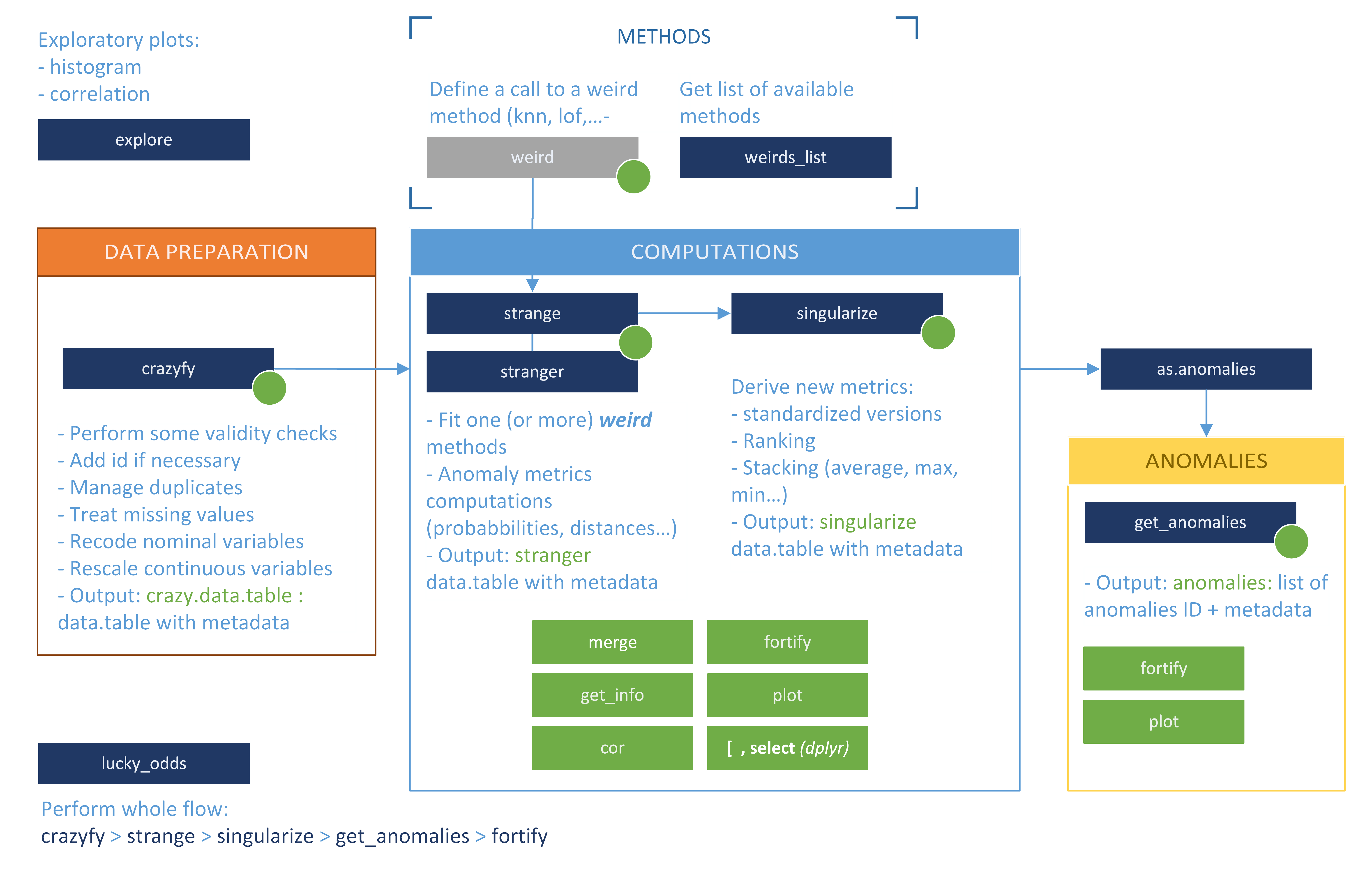stranger is a framework for unsupervised anomalies detection that simplifies the user experience because the one does not need to be concerned with the many packages and functions that are required. It acts as a wrapper around existing packages ("a la Caret") and provides in a clean and uniform toolkit for evaluation explaination reporting routines. Hence the name stranger taht stands for "Simple Toolkit in R for Anomalies Get Explain and Report".
stranger provides wrapper around several packages that contain anomaly detection routines. One approach is called a weird. Currently implemented methods (weirds) can be obtained by using weird_list function. Underlying methods deal with: Angle-based Outlier Factor, autoencode, isolation Forest, kmeans (), k-Nearest Neighbour, Local Outlier Factor, Mahalanobis distance, Semi-robust principal components > distances, randomforest outlier metric.
Obviously, to be able to exploit stranger, user will need to have various packages installed -- those ones containing computational routines.
Using stranger, user has at disposal an analysis workflow.

Main functions associated with proposed analysis workflow deal with:
- Data preparation with
crazyfy: treating missing values, factors/charaters variables (methods usually require numeric values), deduplicate data (but keeping a matching table to restore all records), scaling (important!)... - Metrics computations (using weirds) is performed by
strange(using one weird) orstranger(using many weirds at once). - Once some metrics are available, one has to make them comparables (standardize) and eventually to aggregate them (stack). This is the purpose of
singularize. - Based on all that is then available, once can derive anomalies (flags), which is done with
get_anomalies - Merging back any object with source data (or any other data assumed there is an id) is possible with dedicated
fortifymethods.
In addition, those steps lead to objects having a specific S3 class and some visualization is possible thanks to dedicated plot methods.
We did write some vignette to accompany you in the discovery of anomalies using stranger. We recommend to read vignettes in the following order:
- stranger for the impatient (vignette) will introduce you to quick workflows to get and visualize some anomalies.
- Working with weirds () introduce the usage of
strangerfunction, the possibility tomerge, stack (aggregate) methods and normalize metics withsingularizeand also derive your own anomalies based on manual filtering. - Stranger weirds methods (vignette) list all available weirds with some information on them.
- Extending stranger () is only suitable if you want to add some weirdness. In the case you want an additional weird method you can read this guide or contact us!.
stranger is not currently available on CRAN. Install it from github:
# install.packages(devtools)
devtools::install_github("welovedatascience/stranger")- Vignettes
- sample analyis (Sven)
- Extending stranger (Eric)
- Shiny small interface for anomalies exploration
- Add weird for H2O autoencode
- add install_weirdness to install all weird packages
- add
get_infomethods for every class - submit to CRAN
